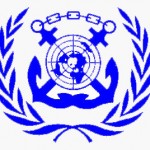A question from a customer of my ONSITE TRAINING on October 15th, 2015:
Hey Daniel,
I just had a quick question regarding limited quantities. If I have 2 different hazmat items that normally could not be shipped together per the shipping regs but one qualifies under the limited quantities provision then are they able to be shipped together? The way I interpret the regulations is that if an item is being shipped as a limited quantity it no longer has to be segregated due to the amount since we are also not having to label it as the hazardous material.
Thank you for your input.
(10.15.15) I was certain he was right about the segregation requirements for a Limited Quantity but I wanted a little more information:
What mode of transportation? What is the HazMat?
And the next day (10.16.15) I got it:
Hey Dan,
So the items are being shipped via ocean. The 2 hazmat items that I am wanting to put on the same pallet are Nitric Acid(UN2031) and a limited quantity of Silver Nitrate (UN1493). They will be in their own boxes but on the same pallet.

Thanks,
With that information I replied with “The Big Answer” on October 17th:
Sorry for the delay, I hope I’m not too late, but my answer confirms yours:
- Nitric Acid UN2031 may not be shipped as a limited quantity or any other exception under the HMR.
- Silver Nitrate UN1493 may be shipped as a limited quantity according to 49 CFR 173.152.
- Interestingly, there is no mention in 49 CFR 173.152 of a limited quantity not being subject to the HazMat segregation requirements.
- However, 49 CFR 176.80(b) contains an exception for limited quantities from the segregation requirements of the HMR.
- Nitric Acid UN2031 may or may not be shipped as a limited quantity per the IMDG Code depending on its concentration.
- Silver Nitrate UN1493 may be shipped as a limited quantity per the IMDG Code.
- Per 3.4.4.2 of the IMDG Code, the segregation provisions of chapter 7.2 do not apply to packagings of limited quantities.

I hope this helps. Please don’t hesitate to contact me with any other questions.
His final reply:
Conclusion/Summary:
Contact me with any questions you may have about the transportation of hazardous materials by air, highway, vessel, or rail International and Domestic Daniels Training Services 815.821.1550 |
It’s not uncommon that person who have received my Onsite Training follow-up with questions once they begin to apply the information from the training on their job.
Contact me to schedule Onsite Training required by the International Maritime Organization (IMO) every three years, the International Air Transport Association (IATA) every two years, or the Pipeline and Hazardous Materials Safety Administration (PHMSA) every three years.
